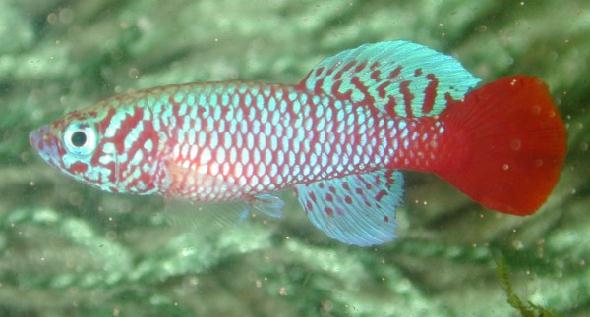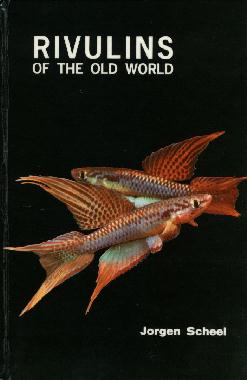
Photo by Bill Shenefelt

Photo by Bill Shenefelt
My fascination with these little jewels began many years ago when
I watched an episode of the nature documentary series Survival. It
showed Nothobranchius neumanni spawning in its little
pool as it dried up. I was hooked then and there. I wanted some
for my fishtank. Unfortunately I then didnít know what I had seen
and none could be found on display in the local fish shops.It was
some years later when I encountered two tanks of Aphyosemion
australe. One tank held the gold morph while the other held the
wild type. I rapidly raised the money to buy a pair of the wild
type fish and took them home and stupidly dumped them in my busy
community tank. I didnít know better then. Two weeks later the
male was exhumed from his dusty tomb behind the curtains about a
meter away from the tank. The female disappeared without a
trace... That was 1988. In 1996 I read an article in the new
local fish magazine (which lasted all of 3 years in publication)
that showed that a local Professor at the university I hoped to
attend had N. rachovii. In 1997 directly after registration I
walked into Prof. Dirk Bellstedtís office and made first contact
in what was to become a critical link in both my Biochemistry
career and killifish hobby. It was some time later that I finally
managed to get fish and some time later before I could breed them
to successfully. By early 1998 I was chin deep in the killifish
hobby. In South Africa it was the Nothos that were the
easiest to obtain and the most rewarding to maintain. While the
Nothos captivate my main interest the delicate beauty of
the Aphyosemions and ornate finnage of the cynolebias types draw
me to explore other facets of the hobby.
February 2001 saw the launch of the Southern African Killifish Society. Visit our website to learn more about us. Thanks to the help of Lee Finley of Finley Aquatic Books, I have managed to track down a copy of Jorgen Scheel's book: Rivulins of the Old World, published by T.F.H. in 1975. The information it holds is astounding! The taxonomy and number of species is a bit out of date though. Another excellent book is Success with Killifish by the late Ed Warner. The book is available (very cheaply) from his wife, Ruth.
For more information on killifish you can explore the following links: Non-annual Killifish care and Annual killifish care. There are also links to information on incubating killifish eggs and shipping killifish eggs. You may also want to have a look at Keeping Killifish for an guide to keeping killifish. Some more species specific information can be found on the SAKS site under articles.